C-Section Scar Pain: What to Do When It Keeps Hurting
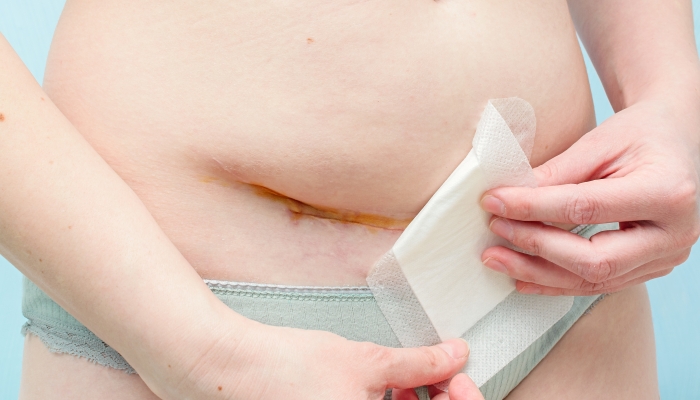
- C-section pain is caused by an overgrowth of scar tissue or irritation to the wound as it heals.
- C-section pain should resolve within 6 weeks. Lasting pain should be addressed by your healthcare professional.
- You can minimize abdominal pain after a C-section by wearing loose clothing and avoiding strenuous activity.
- Surgical scar pain during the first 6 weeks of recovery may be caused by infection or irritation.
A cesarean section is a way to get your baby safely into the world if you have certain risk factors like placenta previa. Some people schedule repeat cesarean sections or have to get one in an emergency.
Although any method of delivery that keeps you and your baby safe is a great option, C-sections are a major abdominal surgery. They require longer healing time than a vaginal delivery and you’ll need extra care to keep yourself healthy.
Everyone who gets a C-section will end up with a scar on their lower abdomen along their bikini line. Some people aren’t bothered by their C-section car, but others suffer from long-lasting pain or find that their incision site becomes completely numb.
Many frustrated mothers wonder about their C-section scar pain. What should you do when it keeps hurting?
Reasons Your C-section Scar May Be Hurting
After you come home from the hospital, it’s normal to have some pain at the incision site. To get your baby safely out of your uterus, your doctor has to perform surgery and cut through your skin, muscle, and uterus. This, understandably, causes some pain for a while.
C-section pain should be controllable without pain medication after 1-2 weeks. If you have continued pain after 14 days, you may need to return to see your doctor.
Common causes of early C-section pain
During the first few weeks of your postpartum period, it’s normal to have some pain. However, if your pain is uncontrolled despite pain medication, and it prohibits you from caring for yourself or your baby, you should make some changes or seek help from your medical provider.
Tight Clothing
After your delivery, try wearing loose-fitting comfortable clothing for a few weeks. Restrictive clothing can rub against your incision and cause pain and irritation at your surgical site.
Too much activity
It’s hard to rest and relax with a brand new baby at home, but you should get as much rest as you can after a cesarean section. Twisting or lifting anything heavier than your new baby can put a strain on your incision site and stitches, causing pain and potential complications.
Infection
Infection is a dangerous and painful potential complication of a cesarean section delivery. If you notice redness, increased swelling, or drainage at your incision site, visit your doctor right away. They should be able to help you with antibiotics to clear up your infection right away.
Signs of infection can include:
- Redness
- Warm
- Fevers
- Swelling
- Drainage
Wound dehiscence
Wound dehiscence happens when your newly stitched surgical site opens back up. This can cause pain and puts you at a higher risk of infection.
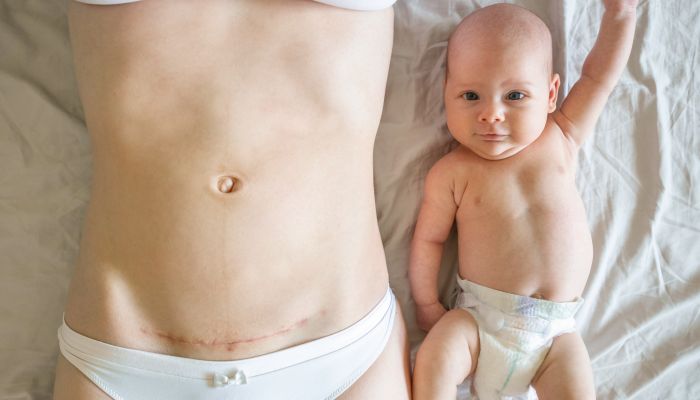
How Long Does It Take for a C-section Incision to Completely Heal?
Your C-section recovery will last for about 6 weeks after you deliver your new baby. As your body heals, your incision site will go through different stages of recovery including the inflammatory, proliferative, and remodeling stages.
During the first 1-2 weeks, your scar will need to be held together with glue, stitches, or staples. For the next 4 weeks, your skin will continue to heal, but will not be very strong. After 6 weeks, scar tissue is completely formed and is actually stronger than the surrounding tissue.
Activities to avoid
While your C-section scar heals, try not to lift anything heavier than your baby. Avoid twisting or stretching your abdomen, as this can impair the healing process.
Is It Normal for a C-section Scar to Hurt Years Later?
Some women may experience pain for years after their cesarean delivery, or have pain start back up after it has gone away.
Reasons for late C-section irritation
C-section scar pain that begins months or years after giving birth is a good reason to consult with your medical team. Wellness professionals will be able to help you determine the cause of your pain and help you find relief.
Hypertrophic Scarring
Hypertrophic scarring is a condition where scar tissue overgrows over an injured area. Not everyone experiences pain with hypertrophic scarring, but some scars can cause pain, itching, and numbness or tingling.
Adhesions
Adhesions are connections between two different types of tissue. Adhesions are common problems after most abdominal surgeries, including C-sections. They are more common if you have multiple C-sections or abdominal surgeries.
Adhesions may not be detected for months or even years, but can lead to problems like chronic pain and even bowel obstructions if they are not treated.
Keloid Scarring
Keloid scarring happens when collagen continues to form over C-section scars long after they have healed and closed. They are an extreme version of a hypertrophic scar. This overgrowth of tissue can cause you to feel pain, especially when bending, twisting, or wearing tight clothing. Keloid scarring can cause itching, numbness, and irritation at the site.
Endometriosis
Abdominal wall endometriosis is a rare complication of cesarean delivery. Endometriosis is when endometrial tissue grows outside of your uterus.
This can cause cyclic pain that is worse during your menstrual cycle. You may feel a painful lump at your C-section scar and notice that you have heavier bleeding with painful periods. Since this condition is rare, it’s often misdiagnosed.
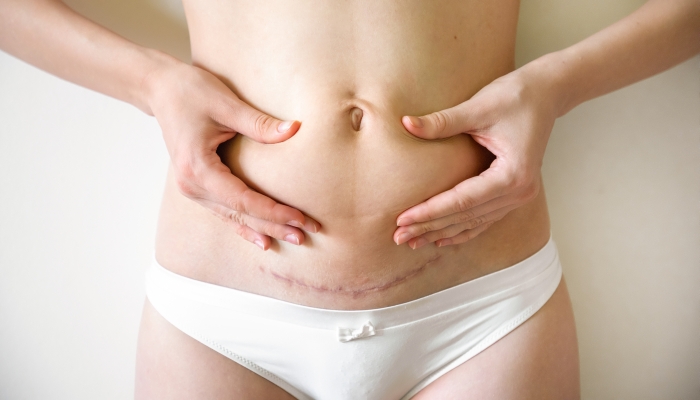
Tips to Reduce C-section Scar Pain
There are many ways you can reduce C-section scar pain, depending on the cause of your pain. While pain medication works well for the immediate post-surgical pain, other strategies are better for long-term pain relief.
Rest and recover
Rest is essential after a C-section delivery. As much as you can, ask for help with your baby. Try to eat well and sleep whenever you can. Ask for lifting help and avoid strenuous activity. Avoid sexual activity for at least 6 weeks after you deliver your baby.
Wear an abdominal binder
An abdominal binder can support your muscles during your C-section recovery and keep skin from pulling at your incision site when you walk or move around.
Keep your incision clean
Keeping your incision clean and dry during the first six weeks of your recovery is important. You can shower, but should avoid swimming or soaking in the tub. If you wear an abdominal binder to help you heal, change it frequently and make sure it’s completely dry before you put it on.
Surgical repair
Some hypertrophic or keloid scars require surgical repair to help them heal. Often, surgeons will surgically remove a keloid scar and then use cryotherapy to make sure that the keloid doesn’t return.
Physical therapy
A physical therapist can help reduce pain by helping you strengthen your abdominal muscles and reduce scar tissue formation. They can do this by helping you perform safe, gentle exercises, and using special tools to massage and break up excess scar tissue that can cause pain and discomfort.
Comfortable clothing
Soon after birth, any clothing that rubs against your C-section scar can cause pain and irritation. You will need to wear loose-fitting clothing and special underwear to avoid irritating your C-section incision site for about 6 weeks after your cesarean delivery. If you develop a hypertrophic or keloid scar, you may have to continue to choose comfortable clothing long after your delivery.
When to See a Doctor
Healthcare providers want you to be in your best health and pain-free. If you experience any C-section scar pain, it’s appropriate to call your OBGYN or surgeon to discuss your problems. If you notice more painful periods or an increase in menstrual bleeding over time, it’s a good idea to get checked out.
FAQs
Is it normal for a C-section scar to itch?
It’s normal for C-section scars to itch immediately after surgery. Some itching and irritation is expected as your skin goes through the repair process. If your scar continues to itch after 1-2 weeks, you may have an infection or may be at risk for hypertrophic scarring.
Is it typical to have back pain after a C-section?
It’s common to have back pain after any delivery. Hormonal changes, weight gain, and leaning over while breastfeeding can all cause lower back pain. If you received an epidural for vaginal or cesarean delivery, this can also cause some back pain for a few days after you deliver your baby.
How can I reduce the appearance of my C-section scar?
Tips for reducing the appearance of your C-section are very similar to reducing post C-section pain. Avoid strenuous activity for a few weeks after delivery, wear loose-fitting clothing, choose supportive underwear, and avoid infection.
Does a second C-section increase my risk of complications?
Getting multiple C-sections or abdominal surgeries does increase the risk of complications. Hypertrophic and keloid scars, adhesions, and dehiscence are all more likely with a second cesarean section.
What kinds of pain medication can I take?
Immediately after your C-section, you will probably be offered some kind of narcotic medication such as Norco or Lortab. You should be able to discontinue the use of these stronger medications after a day or two. After that, you can switch to ibuprofen or acetaminophen. Make sure you discuss any medications with your doctor, especially if you’re breastfeeding.
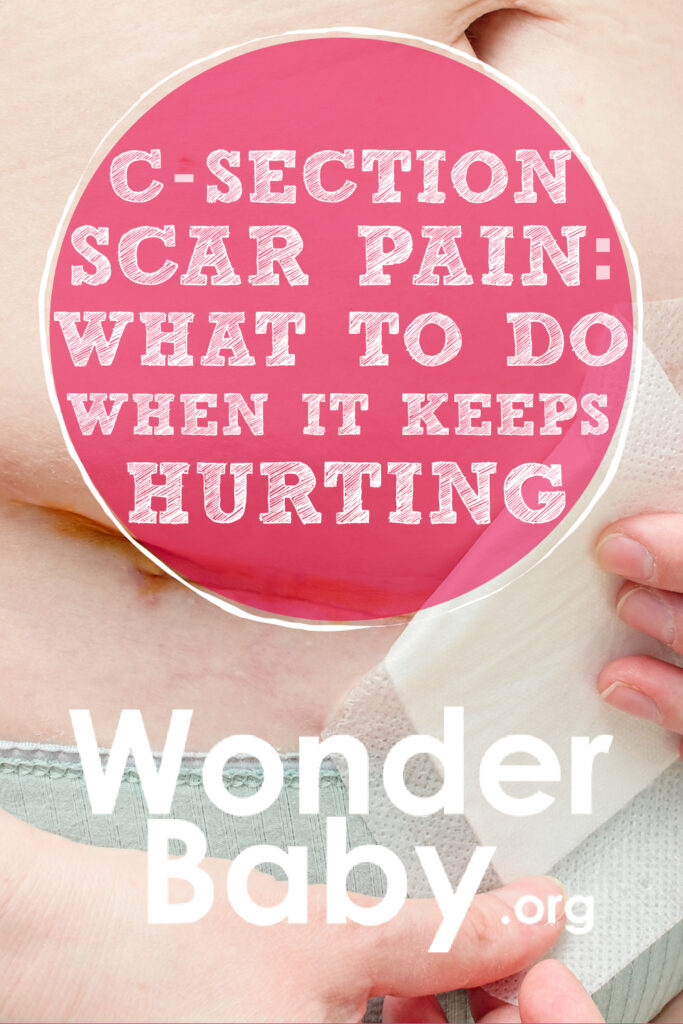
The information WonderBaby provides is not intended to be, and does not constitute, medical or other health advice or diagnosis and should not be used as such. Always consult with a qualified medical professional about your specific circumstances.
Related Posts
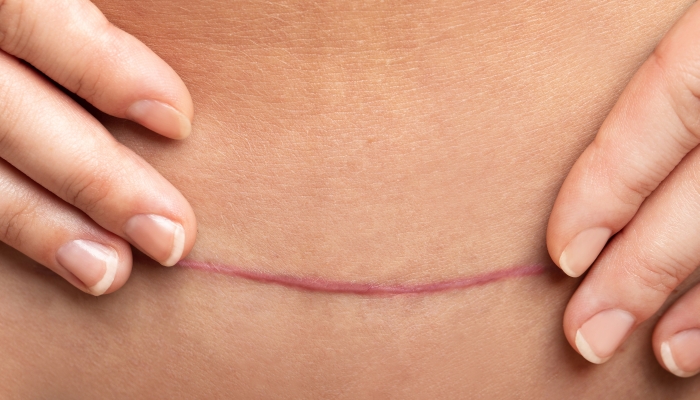
Pregnancy
How To Deal With an Ingrown Hair on a C-Section Scar
Ingrown hairs on a C-section scar can be treated using a warm compress or mild exfoliation. Infected ingrown hairs may require antibiotic treatment.
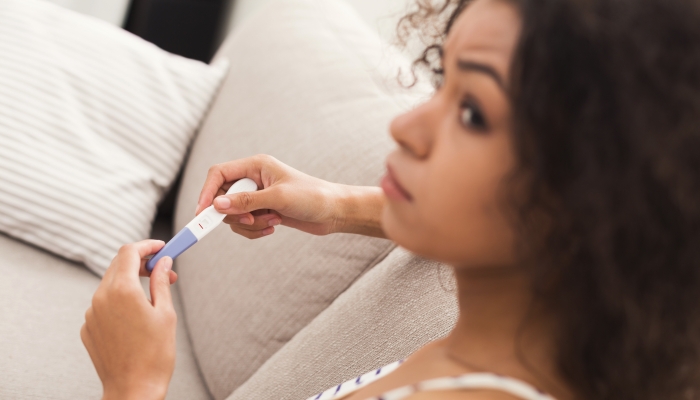
Pregnancy
What’s a Dye Stealer Pregnancy Test?
A dye stealer pregnancy test usually means that your hCG levels are very high, which is typically considered a good sign for pregnancy.
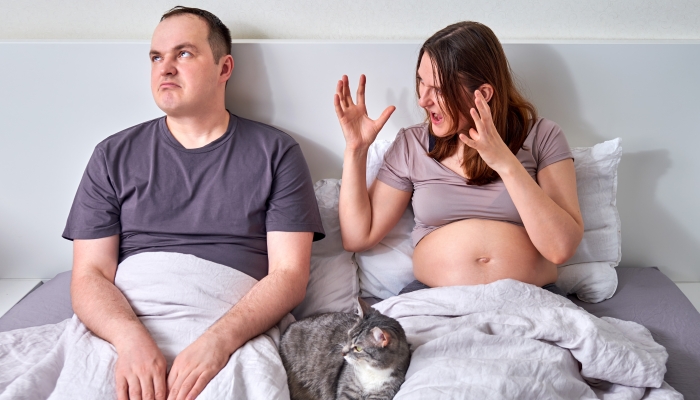
Pregnancy
Can Yelling Cause a Miscarriage?
Yelling alone can not cause a miscarriage. However, maternal stress can cause high blood pressure, preterm labor, and other health problems.